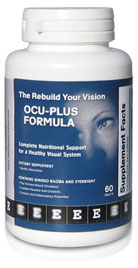|
Do You Have a Eye Pterygium?
An Eye Pterygium is an abnormal mass of tissue arising from the conjunctiva of the inner corner of the eye that obstructs vision by growing over the cornea. Causes of a Pterygium UV radiation (usually from sunlight) is the most common cause of a Pterygium. This explains why a Pterygium occurs with increasing frequency in climates approaching the equator. Other causes include continuous exposure to dry, dusty environments. People who spend significant time in water sports (surfing or fishing) are particularly susceptible to Pterygiums because of the intense exposure to UV that occurs in these environments. When UV rays continuously assault the eye, the conjunctiva may thicken in a process similar to callus formation on the skin. The sensitive structures of the outer eye often cannot comfortably tolerate this degenerative process, and irritation, redness, foreign body sensation, and ocular fatigue can result. Therefore, wearing UV-blocking eye wear may not be sufficient in preventing these Eye Diseases. But it is a step in the right direction. Sunlight is composed of light (obviously) and ultraviolet rays. The light itself does not lead to eye diseases, only UV rays do.
There are three types of UV rays. UVC is blocked by the ozone layer, and therefore will not be discussed in this article. It is highly recommended to select eye wear that will block both UVA and UVB. These glasses are labeled "UV 400".
It is important to realize that ultraviolet can go through clouds, to a certain extent. Therefore, it is advised to wear UV protection, even if it is not a clear sunny day. Kids and teenagers should also wear sunglasses whenever feasible. Their eyes are still developing, making them even more susceptible to UV damage. UV rays coming from the temporal sides can be very damaging as well. These rays are condensed by the Cornea (clear layer right in front of the color of the eye) onto the nasal conjunctiva (white of the eye), facilitating pinguecula (yellow bump on the white of the eye), which can eventually lead to a Pterygium formation over time. An eye Pterygium is defined as the conjunctiva growing over the cornea. UV rays hitting the eye straight on are even more damaging, leading to Cataracts (lens turning opaque, similar to looking through a very dirty windshield) and Macular Degeneration (loss of central vision) Preventing Pterygium The best method of preventing Pterygium is to regularly wear UV 400 rated sunglasses when outdoors in sunny conditions. Sunglasses with a wrap-around design provide better protection than those with large gaps between the sunglass frame and the skin around the eyes. Wearing a hat with a wide brim provides valuable additional protection. Treating Pterygium In mild cases, Pterygium redness and discomfort can be controlled with lubricant eye drops (artificial tears). When symptoms of redness, irritation, or Blurred Vision are resistant to conservative treatment, or when vision is affected by progressive growth of a Pterygium, surgery is considered. History of Pterygium Surgery In Pterygium surgery, the abnormal tissue is removed from the cornea and sclera (white of the eye). Over the years, Pterygium surgery has evolved significantly, and modern eye Pterygium surgery has a significantly higher success rate than conventional surgery No-stitch Pterygium/Auto graft Surgery No-stitch pterygium/autograft surgery allows most patients to return to work within one or two days of surgery. A research study on 85 patients with a eye Pterygium conducted at Harvard Eye Associates has shown that patients undergoing no-stitch surgery had significantly less pain after surgery than those having traditional surgery. The no-stitch technique also reduced surgery time from an average of 21 minutes to 14 minutes. No eye Pterygium recurrences were found in any patients in the study. No-stitch surgery is made possible by the use of modern tissue adhesive. Composed of clotting proteins normally found in human blood, tissue adhesive allows the surgeon to secure a conjunctiva auto graft in seconds rather than minutes. After about one week the tissue adhesive dissolves with no residue, leaving the eye to heal comfortably.
Although tissue adhesive is derived from human blood products, no cases of blood borne infection have ever been reported among millions of patients treated with this material in heart and lung surgery.

eye pterygium to eye diseases
|
More Information















